THE VISIONARY
The RX-Vision concept car is a statement of intent. Firstly, the intent to give the rotary engine a new lease of life, but also—and equally importantly—to evolve Mazda’s award-winning design even farther and take the brand to new heights.
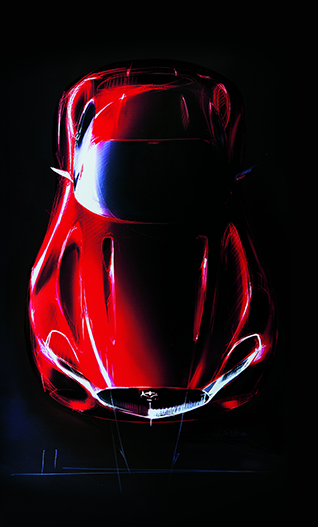
“My dream is to raise the brand positioning to the next level —to make it a true premium brand,” he explains. “I want Mazda to have premium quality in every product, our dealers, and our merchandise. That’s the next step for Mazda.”
For Maeda, this truly represents a life’s ambition. Having joined Mazda in 1982 aged 23, he has seen the company grow and change, along the way making a major difference himself by penning such important cars as the previous Mazda2 and the rotary-powered RX-8. That was a particularly poignant moment as his father, Matasaburo, was the designer of the original RX-7. You could almost say sports cars are the family business.
Mazda’s main business might be more mainstream models, but Maeda wants to send a crucial message: that all Mazdas —hatchback, SUV, or sports car—will always be fun to drive.
“My responsibility is to create the form to attract people to drive,” he says. “If we were to design a vehicle that you don’t drive (an autonomous car), the shape doesn’t need to attract you to drive it. But I want to make the car like your friend, lover, part of the family. And in order to do that, I truly put passion and soul into the design to make it feel like a living thing.”
For Mazda, the connection between the car and driver will always be vital. “A car needs to have character, which means it has to convey that traditional machine-like feel. It must still have a mechanical quality,” adds Maeda.
That’s certainly apparent in the awesome RX-VISION. From its long and almost impossibly low hood (achieved thanks to the compactness of the rotary engine) to its driver-focused cabin (note the manual gear shifter), the RX-VISION is very definitely a machine—and a beautiful one at that. It is also a machine that pays homage to its predecessors while very much looking to the future.
“The (1967) Cosmo looks so pure—it is very clean, there aren’t too many design elements,” Maeda says. “With the RX-VISION, I tried to make it as simple as possible while still having some flavor and movement in the design. Some of the details come from the RX-7 FD. The rear lights, for example, and the headlights seem like pop-ups even though they’re not. These elements create character.”
The design process followed a now proven method introduced by Maeda with the KODO—Soul of Motion design language. “With the RX-VISION, we spent almost half a year creating clay models by hand—no computers,” he says.
A total of ten months were spent bringing the RX-VISION to life, and fans will have to be a bit more patient before a production car that resembles it goes on sale. “It’s hard to say exactly when it will happen, but it’s not too far in the future,” Maeda says.
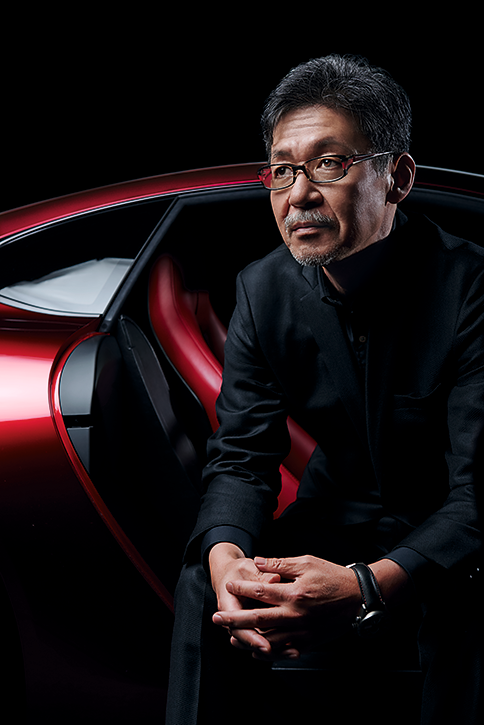
Other Stories
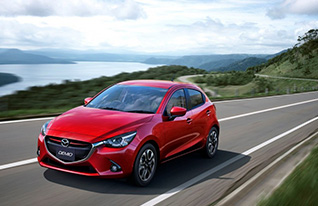
Driving stories on the great & challenging roads and journeys

Stories about the craftsmanship and design evolution of Mazda

Visions and philosophies of Mazda engineers
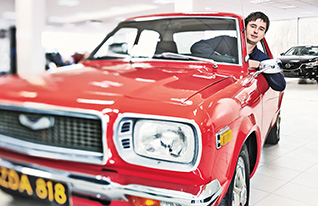
The spirit of Mazda owners, collectors, clubs and aficionados around the world
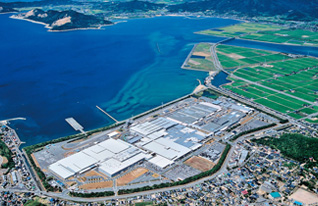
Mazda brand heritage and history

